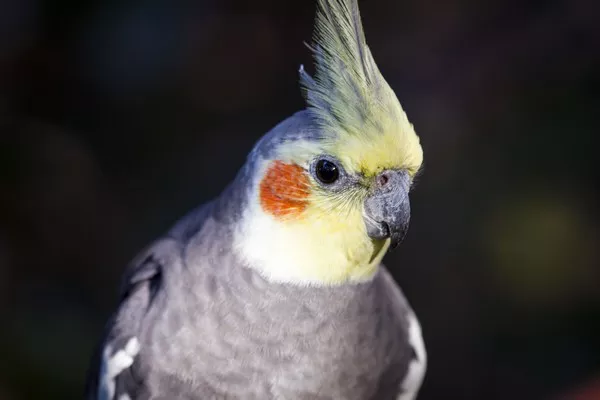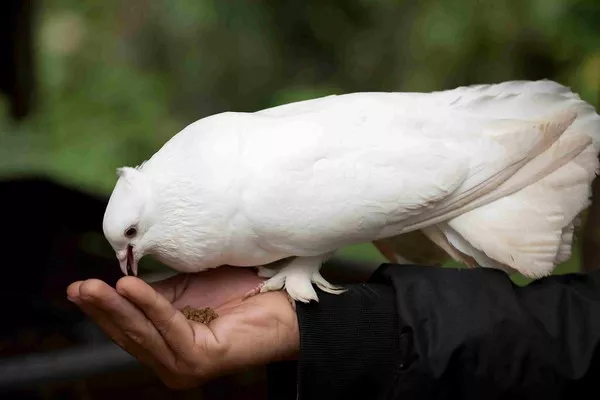Sulcata tortoises, also known as African spurred tortoises (Centrochelys sulcata), are one of the largest species of tortoise in the world, native to the arid regions of sub-Saharan Africa. These impressive creatures are known for their massive size, distinctive spurred legs, and long lifespan. Many people who are interested in keeping sulcata tortoises as pets often wonder how to tell if their tortoise is male or female. This is a common question because, like many reptiles, males and females often look similar, but there are key differences that can help you distinguish between them.
In this article, we will explore the methods used to identify whether a sulcata tortoise is male or female, focusing on the key physical and behavioral characteristics that allow for a clear distinction between the sexes.
Understanding Sulcata Tortoises
Before diving into how to differentiate between male and female sulcata tortoises, it is important to understand some basic facts about this remarkable species. The sulcata tortoise is native to dry, desert-like regions in Africa, where they live in burrows to escape the extreme heat. In the wild, they can grow up to 30 inches (76 cm) long and weigh as much as 200 pounds (90 kg).
Sulcatas are herbivores, feeding on grasses, weeds, and various plants. In captivity, they require ample space to roam and graze, and their diet should consist mostly of high-fiber plants. Due to their size and diet, they need access to sunlight and a dry, warm environment.
When it comes to breeding, males and females have different reproductive behaviors, which leads to some physical differences. Knowing these differences can help you determine whether your sulcata tortoise is male or female.
Key Differences Between Male and Female Sulcata Tortoises
There are several ways to tell the difference between a male and a female sulcata tortoise, and it’s important to understand that some of these characteristics are more pronounced in adult tortoises. Juvenile sulcata tortoises, especially those that are younger than five years old, can be much more challenging to sex. However, as they grow, their differences become easier to distinguish.
Here are the main ways to tell a male from a female sulcata tortoise:
1. Tail Length and Shape
Male Tortoises: One of the most reliable methods to sex a sulcata tortoise is by examining the tail. Male sulcata tortoises typically have longer, thicker tails compared to females. The tail is also more tapered and curved, often extending beyond the edge of the shell. In male tortoises, the cloacal vent (the opening through which waste and eggs are excreted) is located at the end of the tail, and it is more prominent and angled downward.
Female Tortoises: In contrast, female sulcata tortoises have shorter tails that are thicker at the base but taper off more quickly. The cloacal vent is positioned much closer to the body, near the edge of the shell, and is not as noticeable. The tail is generally more streamlined in females.
2. Plastron Shape (Bottom Shell)
Male Tortoises: The plastron (bottom shell) of male sulcata tortoises is usually slightly concave, or indented. This concavity helps the male to mount the female during mating. The indentation allows for better alignment and provides the male with stability while mating.
Female Tortoises: Female sulcata tortoises typically have a flat plastron. The flat shape helps to provide more room for carrying eggs and is a characteristic feature of females in many species of tortoises.
3. Size and Shell Shape
Male Tortoises: Male sulcata tortoises are generally smaller and more compact than females. While males can reach impressive sizes, they tend to be slightly lighter and more streamlined, particularly when it comes to their shell. The shell shape is often more rounded and less domed compared to females.
Female Tortoises: Female sulcata tortoises are usually larger and bulkier, with a more domed shell. The shape of their shell helps them carry the extra weight of eggs. As a result, females often have a wider and more pronounced curve to their shell, which is a natural adaptation for reproduction.
4. Behavioral Differences
Male Tortoises: Males tend to be more aggressive and territorial, especially when they reach sexual maturity. They are known to head-butt other males, sometimes as part of a dominance display or during mating rituals. Male sulcatas are also more likely to be seen engaging in courtship behavior, such as chasing or vocalizing in an attempt to attract females.
Female Tortoises: Females are generally more passive and less territorial. They are usually focused on foraging and nesting when they are ready to lay eggs. During mating season, females may display less aggressive behavior than males, but they can become more defensive if they feel threatened.
5. Mating and Egg Laying Behavior
Male Tortoises: When it comes to mating, males exhibit more pronounced behavior. They may try to mount anything that moves, and in some cases, they may even try to mount other male tortoises. During the breeding season, you may notice males engaging in loud vocalizations and chasing after females.
Female Tortoises: Female sulcata tortoises, on the other hand, become more active when they are in the breeding season, especially if they are ready to lay eggs. Females will dig large burrows or nests for egg-laying, and they are generally more solitary during this time. After mating, females will lay their eggs, typically in the sand or soil.
6. Claw Differences
Male Tortoises: Male sulcata tortoises may have slightly larger, sharper claws compared to females. These claws are used for grasping the female during mating and for establishing dominance over other males. The front claws of males can appear more curved and are often longer.
Female Tortoises: Female sulcata tortoises tend to have more rounded and shorter claws, as they don’t need to use them for the same purpose as males. Their claws are typically adapted for digging and foraging for food.
How to Sex a Juvenile Sulcata Tortoise
As previously mentioned, sexing juvenile sulcata tortoises can be quite challenging due to their size and the lack of developed secondary sexual characteristics. At a young age, both male and female tortoises look quite similar, with no obvious differences in tail length, plastron shape, or behavior. However, there are a few subtle clues you might look for as the tortoise matures:
Growth Patterns: Generally, males may grow more slowly than females, as females tend to reach their full size more quickly. However, this is not always a reliable indicator.
Behavioral Signs: Even in juveniles, males may start to display more aggressive behaviors, such as head-butting or trying to mount other tortoises, although these behaviors become more pronounced as they grow.
Tail Development: Over time, you might notice that the tail of a male tortoise starts to lengthen and curve, while the tail of a female remains shorter and straighter.
It’s important to note that determining the sex of a juvenile sulcata tortoise is often best left to experts or veterinarians, as they can use their experience and knowledge to accurately sex the tortoise.
When to Sex Your Sulcata Tortoise
You can start trying to sex your sulcata tortoise once it reaches around 5 to 7 years of age. At this stage, the physical differences between males and females begin to become more apparent. However, if you are unsure, or if you have a juvenile tortoise that is difficult to sex, it is best to wait until it matures.
In some cases, especially if you have multiple tortoises in the same enclosure, you might want to have them sexed to ensure proper social interactions. Having a male and female in the same enclosure may result in mating and egg-laying behavior, so it’s important to plan accordingly.
Conclusion
Determining whether your sulcata tortoise is male or female involves observing several key physical characteristics, including the length and shape of the tail, the concavity of the plastron, the size and shape of the shell, and behavioral differences. These characteristics become more pronounced as the tortoise matures, with adult males and females clearly distinguishable from one another.
While it can be challenging to sex juvenile sulcata tortoises, as they grow older, their sexual differences become much easier to identify. If you are ever unsure about the sex of your tortoise, consulting a veterinarian or reptile expert is always a good option.
Understanding the sex of your sulcata tortoise can help you provide better care and ensure that you meet their specific needs, whether it’s for breeding purposes or simply understanding their behavior. Either way, knowing your tortoise’s sex will deepen your connection and appreciation for these fascinating creatures.
Related Topics:

















